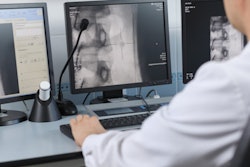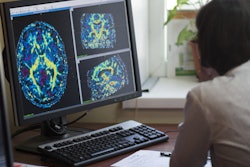
The COVID-19 pandemic is affecting radiology practices in a variety of ways, from elective imaging management to workforce protocols and revenue. In an article published April 27 in the Journal of the American College of Radiology, six practice leaders described how they've coped with the crisis.
"As our practices prioritize managing the acutely ill as an initial response to COVID-19, we begin to digest the management implications," wrote a team led by Dr. Christoph Lee of the University of Washington in Seattle.
Lee and colleagues interviewed practice leaders who represent private and academic groups across a range of types, sizes, and employment models:
- Dr. Sabiha Raoof of Jamaica and Flushing Hospital Medical Centers in New York City
- Dr. Samir Patel of Radiology Inc. in Mishawaka, IN
- Dr. Robert Pyatt of Wellspan-Summit Health in central Pennsylvania
- Dr. David Kirsch of Southern Radiology Consultants of Louisiana and Mississippi
- Dr. Mahmud Mossa-Basha, of the University of Washington
- Dr. Michael Recht of NYU Langone Health Systems in New York City
The leaders offered the following perspective from their experience:
Management of elective imaging. All practice leaders consulted with referring physicians to decide which imaging procedures could be rescheduled, and all practices suspended screening mammography, the group wrote. Some rescheduled any screening exam, including lung cancer and bone densitometry, but most continued to offer diagnostic workup imaging (mammography, oncologic staging, interventional oncology).
Workforce protocols. All the practices maintained some onsite presence, but all also shifted to off-site work when possible, especially for staff with risk factors for COVID-19 or with family members at risk, the group wrote. "Both private and academic practices noted the importance of their IT staff in coordinating and supporting expansion of workstation availability," they noted. Practice leaders described limiting the number of radiologists in reading rooms, dividing staff into teams to minimize cross-team exposure to the virus, and consolidating hours to deal with outpatient site closures and low procedure volumes.
Revenue concerns. All practice leaders stated they were concerned about the recovery of imaging volumes and revenue, although each practice differed in how it planned to address these concerns. "Critical access hospitals such as Jamaica and Flushing ... are overwhelmed and focused on providing care to the critically ill ... and thus cannot focus on specific radiology departmental revenue concerns," the authors noted. Some practices reported limiting the use of teleradiology and outsourcing or moonlighting to boost procedure volume and maintain revenue. Private practice leaders applied for federal loans and grants, while academic practices cut faculty incentive payments for excess shifts, overtime, or internal moonlighting.
The COVID-19 crisis isn't over, the authors cautioned.
"Some states and institutions are reporting a plateau in COVID-19 cases and non-COVID-related admissions are on the rise," they wrote. "Nevertheless, the practice-level maneuvers to manage extraordinary conditions remain salient as we, collectively, will be systemically stressed again. Heeding these lessons may lessen the impact of second waves of regional COVID-19 infections and future pandemics."




















